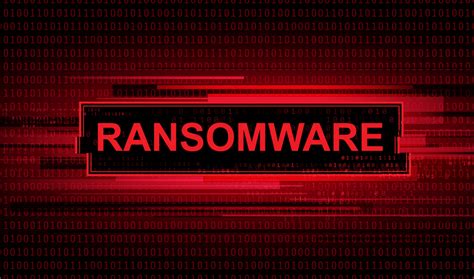Gone in 52 Seconds... The Global Ransomware Crisis and the Case for Warden
In 2021 alone, 623.3 million ransomware attempts targeted organizations globally—a 105% increase from the previous year. Incidents like Colonial Pipeline, JBS, and Kaseya shut down critical industries, costing billions. As attackers encrypt systems in mere 52 seconds, the time to respond is minimal.
This analysis of encryption speed highlights the brutal efficiency of ransomware attacks, showing why traditional defenses fail to act fast enough. Once ransomware strikes, it’s often too late to prevent disaster, as data is quickly locked, and businesses are forced to make agonizing decisions—pay up or lose everything.
However, Warden by Cyber Strategy Institute offers an innovative pivot. Unlike other solutions, Warden’s Default Deny technology stops ransomware in its tracks. Before the malware can begin encrypting your files, Warden automatically blocks it through Kernel API Virtualization, preventing privilege escalation, lateral movement, and even zero-day attacks. It acts during the most critical stages of the Kill Chain—where milliseconds matter—and ensures your systems remain untouchable by proactively denying malicious activity. This is why prevention beats detection every time!

The Cold Hard Truth: Why Most Defenses Fail Against Global Ransomware Crisis
You might think your organization is prepared, with layers of firewalls, antivirus solutions, and detection tools. But as this research reveals, ransomware encryption is often completed in under a minute—before most defenses even realize something’s wrong. For example, LockBit encrypts files in five minutes, while others like Avaddon and Ryuk take just over 13 minutes. By the time your systems alert you, it’s already too late.
Ransomware Families and time to encrypt your files.
|
Family |
Median Duration |
|
LockBit |
00:05:50 |
|
Babuk |
00:06:34 |
|
Avaddon |
00:13:15 |
|
Ryuk |
00:14:30 |
|
Revil |
00:24:16 |
|
BlackMatter |
00:43:03 |
|
Darkside |
00:44:52 |
|
Conti |
00:59:34 |
|
Maze |
01:54:33 |
|
Mespinoza (PYSA) |
01:54:54 |
|
Average of the median |
00:42:52 |
Relying on detection after an infection occurs isn’t enough, and strategies like patching or network segmentation, while valuable, do nothing to stop an ongoing encryption process. What’s needed is a solution that works preemptively, blocking the attack before it even starts.
That’s where Warden excels and why prevention beats detection every single time.
Warden: Your Last Line of Defense—Stopping Ransomware at Its Core
Instead of just playing catch-up with malware, Warden proactively neutralizes threats before they can launch. Its Default Deny stance is revolutionary in that it doesn’t allow ransomware or any other unapproved software to execute. This approach, combined with Kernel API Virtualization, creates an impermeable barrier between your systems and attackers.
Warden’s impact isn’t theoretical—it’s being deployed across industries vulnerable to ransomware, from healthcare systems to critical infrastructure. The ability to lock down endpoints, block lateral movement, and contain malware spread is essential for organizations facing sophisticated threats in today’s landscape.
Act Now: Don’t Become the Next Statistic
With ransomware incidents surging, and the sheer speed at which encryption occurs, waiting to act is no longer an option. Warden by Cyber Strategy Institute offers a future-proof solution that doesn’t just mitigate ransomware—it stops it before it can cause irreversible damage. You can’t afford to wait until ransomware hits; secure your systems now and prevent yourself from becoming another name on the growing list of victims.
Why You Should Act Now
Take Control Before It’s Too Late
Ransomware attacks are not slowing down—quite the opposite. Businesses that fail to adopt pre-emptive defenses are gambling with their data and reputation. Warden gives you the upper hand with its Default Deny approach, ensuring ransomware can’t even execute.
Actionable Steps for Readers:
-
Evaluate Your Current Defenses
Are you relying on detection-based solutions? Understand that by the time detection happens, it may already be too late. Evaluate if your system is proactively blocking unauthorized software. -
Schedule a Warden Demo
Take the first step by scheduling a live demo to see how Warden’s proactive Default Deny technology can protect your environment before ransomware has a chance to execute. -
Get a Customized Cybersecurity Assessment
Reach out for a tailored cybersecurity wellness check to identify gaps in your current defense strategy and learn how Warden can fortify your business.

Top-11 Ransomware Concerns in 2024
1. How fast can ransomware encrypt a system in 2024?
Ransomware can encrypt systems in as little as 52 seconds, as seen with LockBit. This speed emphasizes the critical need for pre-emptive defenses like Warden’s Default Deny technology, which blocks attacks before encryption begins.
2. What are the most common ransomware families today?
LockBit, Babuk, Ryuk, Revil, and Darkside remain major threats. Warden’s technology can mitigate these attacks by preventing malware execution entirely through advanced kernel API virtualization.
3. Is detection enough to stop ransomware?
No, detection alone is too slow. By the time ransomware is detected, encryption is often complete. Warden’s approach is proactive, stopping ransomware before it can run.
4. What’s the cost of a ransomware attack in 2024?
Ransomware attacks are costing companies millions in downtime, ransoms, and data loss. Warden reduces this financial burden by stopping ransomware from ever encrypting files.
5. What industries are most targeted by ransomware?
Healthcare, education, and critical infrastructure remain top targets. Warden provides a zero-trust defense strategy that’s highly relevant for protecting these sensitive environments from ransomware.
6. Can ransomware be stopped before it encrypts?
Yes. Warden’s Default Deny stops ransomware before it can even begin the encryption process, acting at the kernel level to neutralize threats immediately.
7. What are the key preventive measures against ransomware?
Traditional measures like multi-factor authentication, network segmentation, and patching are useful but insufficient. Warden’s approach enhances these defenses by preventing malware from launching at all.
8. Why are ransomware attacks increasing in 2024?
Ransomware-as-a-Service (RaaS) and faster encryption methods make it easier for criminals to deploy attacks. Warden tackles this escalation by cutting off ransomware’s ability to execute.
9. How does Warden compare to traditional antivirus solutions?
Unlike antivirus solutions that rely on detection, Warden operates with a Default Deny approach, preventing unauthorized software from executing in the first place, offering unmatched ransomware prevention.
10. What is the future of ransomware defense?
The future of defense lies in pre-emptive protection, not detection. Warden’s Default Deny technology embodies this approach, securing systems by blocking malicious activity before it can compromise data.
11. How does Warden address evolving ransomware tactics?
Warden’s proactive defense model stops new and evolving ransomware variants by preventing them from executing, even as attackers develop faster and more sophisticated methods.





